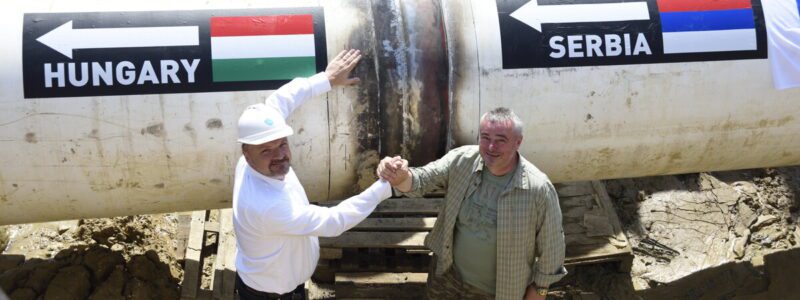
Serbian company Srbijagas and Hungary’s FGSZ have finished building the linear section of a gas pipeline connector between the two countries through which Hungary will be able to receive Russian gas transported through a Black Sea pipeline instead of through Ukraine.
Serbia’s national TV channel reported the welding of the “golden” joint of the pipeline on the border between the two countries.
Gas supplies along the new route are supposed to start on October 1, the beginning of the new gas year.
The TurkStream pipeline, which carries Russian gas across the Black Sea to Turkey and onward to Southern Europe, went into operation in January 2020. Turkey, Bulgaria, Greece, Macedonia and Romania were the first to receive gas through the pipeline. Serbia, as well as Bosnia and Herzegovina began receiving gas along the new route at the start of 2021. In future, TurkStream gas is also supposed to reach Austria through Hungary.
The first phase of the connector between Serbia and Hungary, with capacity of 6 billion cubic meters per year, involved building a 15-km linear pipeline section.
The expansion of the connector to 8.5 bcm per year has been postponed from October 2022 to October 2023. Hungarian gas companies and officials lost time in the middle of 2020 due to concerns that they might be hit by U.S. sanctions.
The U.S. State Department issued a new clarification on section 232 of the Countering America’s Adversaries Through Sanctions Act (CAATSA) on July 15, 2020, stating that sanctions could be imposed against investors in Russian export energy pipeline projects. The new clarification extended the possibility of imposing sanctions against persons investing, or providing goods and services, directly and that significantly facilitate the construction of the Nord Stream 2 gas pipeline and the second string of the TurkStream pipeline.
Hungary imported 8.637 bcm of Russian gas in 2020.